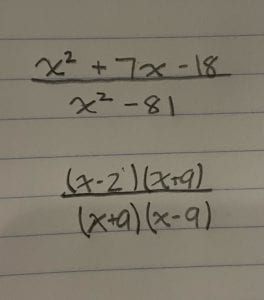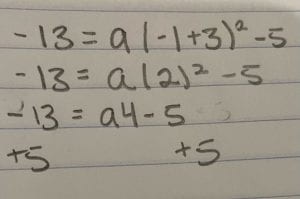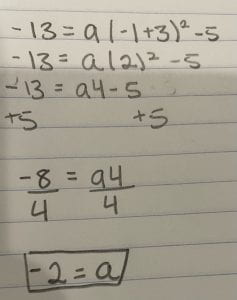This week in Pre-Calc we started our rational expressions unit. Which involves a lot of factoring and “canceling out” like terms to get your expression down to its simplest form possible. One thing to remember is that something like “x+5” is like one number, so if we had x above that, the two x’s could not cancel out.
 Example question
Example question
Step 1: The first thing I am going to do is simplify the denominator. You don’t need to do it in any particular order but I find it easiest to do it this way. I notice that 81 is a perfect square same with x^2 and it’s a subtraction, so I know this is a difference of squares. Meaning that I take the square root of 81 (9), and do (x+9)(x-9), and when foiled back out will equal to x^2-81.

Step 2: Now I am going to deal with the denominator. When I look at the pattern of the equation I am going to see this is a product and sum question. What multiplies to -18 and adds to 7? -2,9. If you check -2×9=-18 and 9+-2=7, so this is going to work. Now because there is no number in front of x^2 I can just put them in the brackets.

Step 3: Now I am going to cancel out like terms and “clean up” my rational expression. I can see (x+9) on the top and bottom, meaning they cancel out to an invisible 1.

Step 4: Now the last thing I need to add into my answer is the non-permissible values. Meaning numbers that if put in the place of x in the denominator would equal to 0, which we can’t have. Go through your entire equal and do the non permissible values for the whole entire equal, every line of work. Sometimes the numbers can change or cancel out. So here, I can see the x cannot equal +9, and if I go up to my second line of work I can see if I insert -9 into the equal it would equal 0. so that will be my second non-permissible value.

And that is it for simplifying down rational expressions! Something to note** (x-1)(1-x) aren’t the same!!



















